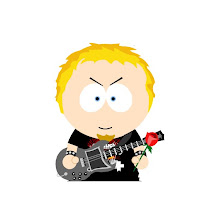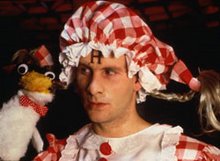Long before the LoTR franchise hit the GW (Games Workshop) shelves, GW already had two main core systems and several other minor specialist games. It was a very successful company, good service, excellent monthly magazine(s) and a high standard in miniature sculpting. Since then however, things have changed drastically, and in my opinion, much of the blame falls on LoTR.
Pre-LoTR the two core systems were Warhammer Fantasy Battle and Warhammer 40,000 (both of which I will refer to later as WHFB and WH40K). In the years 1999 and 2000, GW obtained the licence to design and develop a LoTR based version of their two games in order to coincide with the release of the films. This licence held to around 2005. GW then purchased a further licence around 2004/2005 to extend the LoTR beyond the films.
So it was that the incredibly successful first film; The Fellowship of the Ring, hit our movie screens in 2001, and to accompany the release GW produced the Fellowship of the Ring box sets and blisters (small packets). I myself joined the hobby at this point as I too like so many others were bought in by the whole LoTR franchise. It didn't take long for LoTR to establish itself alongside WHFB and WH40K. The rules and gameplay were nothing special to me, as I had only started to get into the hobby. It was only after I expanded my interest that my opinion greatly changed. Cutting things short a bit GW also released miniatures for the other two films aswell, and these sets, like the Fellowship ones were equally as successful.
At the time GW had (and still has to an extent) a monthly "hobby" magazine named "White Dwarf". Now up until LoTR was introduced only the two other core games had coverage, which ultimately meant they had a lot of coverage. The arrival of LoTR into the magazine meant that the two core systems lost a third of their coverage each to the LoTR content. This was great for me as I had just started, but it became all too clear with the passing of time that this was one of the worst moves GW could make.
In comparison to WHFB and WH40K, the LoTR game sucks. There is actually no other way to draw a comparison. The stories and characters from the other games are so much more interesting and have just the right amount of depth to them. The actual gaming system is also far superior in comparison. So as you can guess LoTR became quite unpopular with the veteran gamers.
After the release of The Return of the King, many wondered what GW would do with LoTR franchise now.....given that the films were done and dusted. Many hoped they would get rid of it, though GW were very quick to put that theory to rest, and it was a this point that they told us about the extended licence bid for 2009. There is no doubt that GW profits soared through the roof during the LoTR initial period, but profit results show now that profits are down, the fall beginning to occur 2004. At this point now I was firmly playing into WHFB and slowly leaving behind my beginnings with LoTR. Then the newest supplement hit us entitled "Shadow and Flames". This was GW's first leap into LoTR beyond the films and boy was it good! It encompassed characters from Elrond's sons, to Glorfindel and Tom Bombadil. New models...great! It soon became clear that these 'supplements' were how GW were planning to expanded the LoTR. In as best order I can remember, the following supplements succeeded Shadow and Flames:
Siege of Gondor - siege weapon rules, plus new characters
Battle of Pelennor Fields - The Haradrim
Scourging of the Shire - final chapters in the Return of the King book
Shadow in the East - Easterlings and Rhun
Fall of the Necromancer - Pre Saurons invasion of Middle-earth
Ruin of Arnor - (newest one) Lands of Arnor and origins of Witch-King
Khazad Dum - next one, Dwarves
I only bought Shadow and Flame, and the others came quite quickly after one another. This presented two main problems. The other two systems had both gone under new editions at this time, so a lot of work was required to help bring existing armies into line with new rules for example. The production of all these supplements meant that all effort was not being fed into WHFB and WH40K. The second problem arose in White Dwarf. These supplements demanded lots of attention, and as such, the LoTR content of the magazine increased, hence the other two suffered.
To make matters worse, GW has decided over the last two years to RE-RELEASE the Fellowship of the Rings and The Two Towers ranges, with the Return of the King being re-released this year. It is very clear from being in the stores that people are not buying into LoTR, especially given that the film hype is over. Only recently have the heads at GW admitted to leaving behind the core market gamers. Hopefully, and many vets will agree with me, that GW will not buy in another licence, as we've all had enough of this messin around. If all goes well, we only need endure it for another two years......
All that said, I DO like the LoTR greatly, I just don't like the attitude GW has to it.
~Damien
Some things I've learned....
(1) An Engineer can do with 10 cent what a fool can do with a Euro.
(2) "Puff" - unimportant; insignificant; unworthy of study by engineering students; waste of time
(3) It's better to keep your mouth shut and let people think you're stupid than to open it and prove them right!
(4) Blockwork people and concrete people can never work on the same site... Apparently they don't like each other....
(5) It's official; I'm fantastic!
(2) "Puff" - unimportant; insignificant; unworthy of study by engineering students; waste of time
(3) It's better to keep your mouth shut and let people think you're stupid than to open it and prove them right!
(4) Blockwork people and concrete people can never work on the same site... Apparently they don't like each other....
(5) It's official; I'm fantastic!
Subscribe to:
Post Comments (Atom)




No comments:
Post a Comment